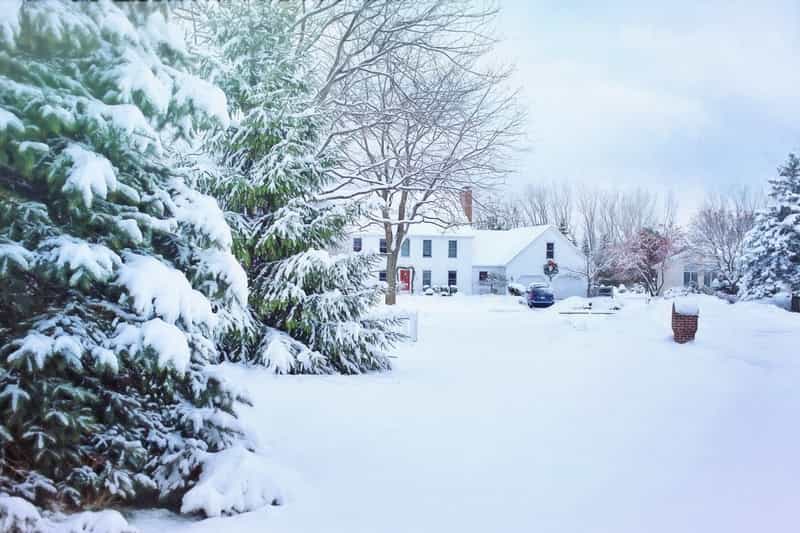With fall right around the corner, it’s almost time to throw on your favorite sweatshirt and cozy up by the fire. Although, there are few things you can do to prepare for the cooler weather. Here are ten things to keep in mind this fall.
1. Clean Your Gutters
Without regular cleaning, your gutters can collect leaves and debris. This especially occurs during the fall as trees begin to lose their leaves. When your duct becomes clogged, water can’t drain, creating a build-up of excess moisture. The water can then seep into your home and lead to mold growth.
During the winter, the water will freeze over, creating pressure on your roof’s structure. So, try to clean your gutters during the fall before temperatures drop too low. When removing the debris from your rain spout, use a plastic scoop. Then use a garden hose to wash out any remaining dirt. You want to clean your gutters at least once a year.
2. Check for Drafts
Your windows can be a huge source of energy waste. Heat loss through windows accounts for 25%-35% of heating and cooling energy use. Consider weatherstripping your casements to prevent air from escaping. Along with conserving energy, this also reduces your heating costs.
It is essential to check for drafts especially during the fall. Undetected breezes can make your home feel chilly during the winter months. To inspect for drafts, close your door or window on a strip of paper. If the paper slides easily, you may need to replace your current weatherstrips.
3. Fix Any Cracks in Your Driveway
Taking care of any cracks can help keep your family safe. Besides safety, having a rougher-looking driveway can decrease your curb appeal. During the winter, any water collected inside the holes expands, enlarging the gaps. This is why it’s important to examine your driveway during the fall.
If you notice any cracks, you can fill them with a sealer and patch the damaged area. Before starting, clean your driveway’s surface. If the gaps are deeper or wider, you may need to replace your entryway. You can choose from multiple materials, such as asphalt or concrete.
4. Drain Your Outdoor Faucets
Draining and disconnecting your garden hose can prevent pipes from bursting. During the winter, the water can freeze over, putting pressure on the pipes. So, to avoid a costly repair down the line, remove any excess water from your outdoor faucets this fall. Also, consider buying an insulation cover to protect them from winter weather conditions.
Follow these steps to effectively drain your spigots:
- Turn off the water supply valve
- Remove any hoses or attachments to your faucet
- Turn the drain on high and let it run until it comes to a full stop
- Push out any excess water flow from your pipes
- Turn the water back on
5. Remove Snow From Your Garage
As winter approaches, snow and ice can quickly accumulate in your garage. This can cause a safety concern for your family. To prevent snow build-up, use a squeegee, a tool with a flat rubber blade, to remove melted snow from your floor. Another tip is to brush off the excess snow from your car before parking it inside your garage.
6. Bring in Your Patio Furniture
You won’t be doing much outdoor entertaining in the winter, so consider bringing in furniture. If left outside, your furnishing is vulnerable to harsh weather, like snow and sleet. This exposure to moisture can cause some materials, such as aluminum, to rust.
You can store deck furniture inside a garage or shed. Consider enclosing them with a plastic wrap or tarp to protect against any water leaks or dust. If you don’t have a proper storage place, wrap them with a waterproof furniture cover. Taking proper precautions ensures your furnishing will be ready to enjoy in the spring.
7. Change Your HVAC Filters
Your HVAC filters can become clogged over time, causing them not to function properly. This can lead to increased energy bills. It’s also a health risk since dust and allergens can spread through the air. Some systems come with disposable filters you simply replace. If you have a washable furnace filter, run it under warm water after vacuuming. You want to check your filters at least once a month.
8. Fertilize Your Lawn
Fertilizing your lawn can help return critical nutrients to your soil. This allows your grass to grow stronger and enhances its natural green color. These more durable roots protect your landscape against harsher winter conditions. Also, fertilizers can help with weed control.
So, when the temperature isn’t too cold add some fertilizer to your backyard. Preparing your lawn in the fall allows you to enjoy a beautiful landscape in the spring.
9. Test Your Winter Equipment
Test to ensure your winter equipment, such as a snowblower, is working properly. This will save you stress when digging out your car from under a mound of snow. Also, if anything breaks, you may not be able to run to the store if there are icy conditions. Along with testing your supplies, give them a quick clean.
10. Schedule a Car Inspection
Over the summer, your car receives a lot of use during family trips and vacations. This is why it’s essential to inspect in the fall to make sure your vehicle is running smoothly. Also, this will prepare your car for icy road conditions.
What to Consider This Fall
As winter approaches, the weather will start to change. So, to protect your house you may want to plan. When fall begins, consider completing these tasks to have a stress-free winter.


